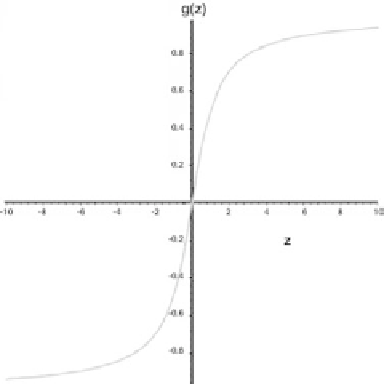Biomedical Engineering Reference
In-Depth Information
Figure 3.
Normalized velocity.
where
θ
is a parameter to control the smoothing rate of the velocity. Figure 3 shows
the profile of the function. For all numerical experiments, we choose
θ
=1. The
signed distance function cannot be preserved during the level set evolution, and
it becomes numerically unstable when the level set function becomes too flat or
steep. Hence, the re-initialization step needs to be applied to keep the level set
function close to a signed distance function. We implemented the method proposed
in [30] to re-distance the level set during the hypersurface evolution:
φ
(
x
,
0) =
φ
0
,
∂φ
∂t
+
sign
(
φ
0
)(
|∇
|−
1)=0
.
φ
(22)
However, it should be implemented carefully as it slows down the convergence
rate of the active contour in a sense. Another drawback is that it may change
the location of the zero level set slightly. As a result, the final level set functions
should not be reinitialized.
3.
EXPERIMENTAL RESULTS
In this section, segmentation experiments are conducted on both synthetic
and real data to illustrate the effectiveness of our approach. Comparisons with
Paragios's method ([11, 12, 13]) with synthetical data are also presented. Real
data are first preprocessed by skull-stripping before applying our segmentation
scheme. All experiments were run on a PC (PentiumIV 2.4 GHz, 512Mb RAM).

